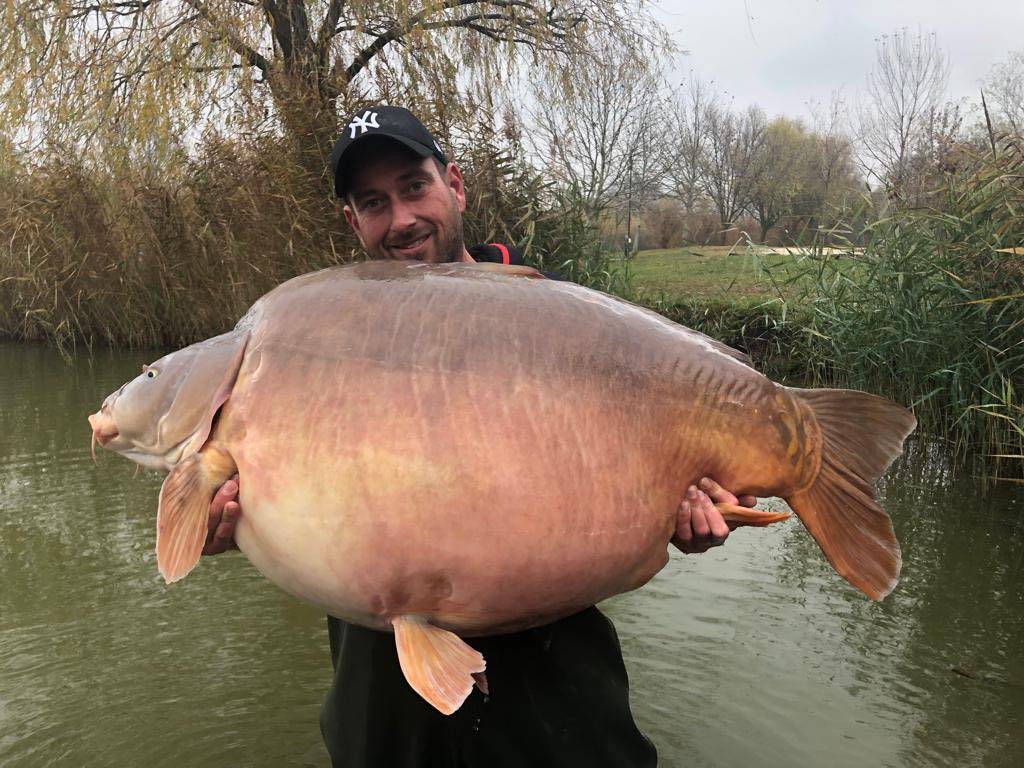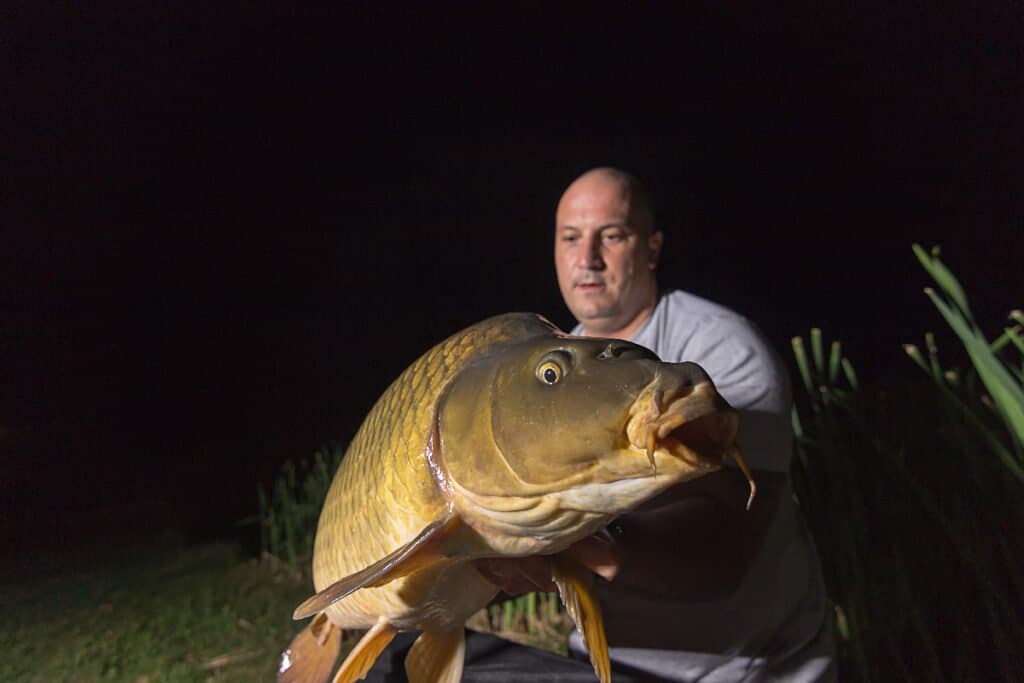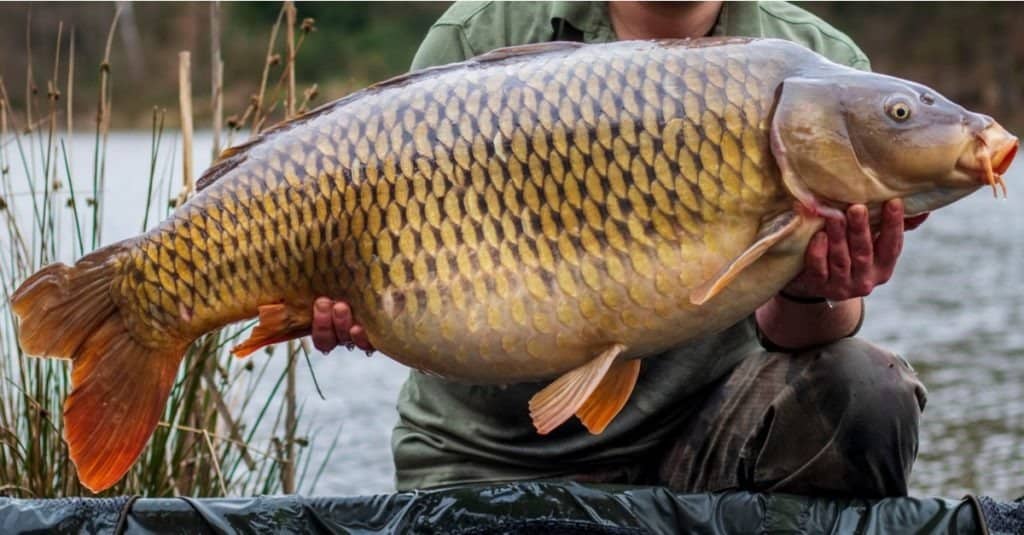Largest Carp: Exploring The Giant Of Freshwater Fish
When it comes to freshwater fish, the largest carp species holds a special place in the hearts of anglers and nature enthusiasts alike. These magnificent creatures are not only fascinating for their size but also for their resilience and adaptability. The world of carp fishing is vast, and understanding the largest carp can open doors to a deeper appreciation of these gentle giants.
The allure of the largest carp lies in their impressive dimensions and the challenge they present to anglers. These fish are known for their strength, making them a favorite target for those seeking a thrilling fishing experience. As we delve deeper into the world of carp, we will uncover the secrets behind their growth and the environments that support them.
This article will explore everything you need to know about the largest carp, from their biology and habitats to the techniques used to catch them. Whether you're an avid angler or simply curious about these aquatic giants, this comprehensive guide will provide valuable insights into the fascinating world of carp.
Read also:Flea Market Elephant Your Ultimate Guide To Discovering Hidden Treasures
Table of Contents
- Biography of the Largest Carp
- Natural Habitat and Distribution
- Factors Influencing Growth
- Types of Carp and Their Characteristics
- Techniques for Catching the Largest Carp
- Nutritional Value of Carp
- Conservation Efforts for Carp
- Statistical Insights on Carp Fishing
- Challenges in Carp Fishing
- Future Prospects for Carp Fishing
Biography of the Largest Carp
Overview of the Largest Carp
The largest carp, scientifically known as Cyprinus carpio, is a species of freshwater fish that has captured the imagination of anglers worldwide. Originating from Asia, these fish have spread across the globe, adapting to various environments. The largest recorded carp, according to the International Game Fish Association (IGFA), weighed over 100 pounds, showcasing the immense potential for growth in this species.
Data and Biodata
Here is a summary of key information about the largest carp:
| Scientific Name | Cyprinus carpio |
|---|---|
| Common Name | Common Carp |
| Maximum Weight | Over 100 pounds |
| Maximum Length | Up to 5 feet |
| Lifespan | 20-40 years |
Natural Habitat and Distribution
The largest carp thrive in a variety of freshwater environments, including rivers, lakes, and ponds. Their adaptability allows them to survive in both temperate and tropical climates, making them one of the most widespread fish species in the world. In Europe and North America, carp are often found in large reservoirs and slow-moving rivers, where they can grow to impressive sizes.
Habitat Requirements
Key factors that influence the habitat of the largest carp include water temperature, oxygen levels, and food availability. Carp prefer waters with abundant vegetation, as it provides both shelter and a source of food. Additionally, they are known to thrive in nutrient-rich environments, which contribute to their rapid growth.
Factors Influencing Growth
Understanding the growth of the largest carp involves examining several factors, including genetics, diet, and environmental conditions. Carp that inhabit nutrient-rich waters with minimal human interference tend to grow larger and healthier. Furthermore, the availability of food plays a crucial role in their development, as carp are omnivorous and feed on a variety of plant and animal matter.
Key Factors for Growth
- Genetic predisposition for large size
- Abundant food sources, including algae and small aquatic organisms
- Optimal water temperature and oxygen levels
Types of Carp and Their Characteristics
There are several types of carp, each with unique characteristics that make them distinct. The common carp, mirror carp, and leather carp are among the most well-known varieties. Each type exhibits variations in scale patterns and body shapes, which can influence their growth potential and appeal to anglers.
Read also:Did George Omalley Die In Greys Anatomy The Truth Behind The Heartbreaking Exit
Characteristics of the Largest Carp
The largest carp typically belong to the common carp variety, known for their robust bodies and thick scales. Mirror carp, on the other hand, have fewer scales, which can make them more vulnerable to injuries but also more appealing to anglers due to their unique appearance. Leather carp, with their scaleless bodies, represent another fascinating variation within the species.
Techniques for Catching the Largest Carp
Catching the largest carp requires patience, skill, and the right equipment. Anglers often use specialized techniques, such as baiting with boilies and using sensitive rods to detect even the slightest nibble. The challenge lies in understanding the behavior of these fish and adapting strategies accordingly.
Effective Fishing Techniques
- Using boilies and particle baits to attract carp
- Employing sensitive rods and reels for better detection
- Setting up swim feeders to maintain interest
Nutritional Value of Carp
Beyond their recreational value, carp are also a nutritious source of protein. They are rich in essential fatty acids, vitamins, and minerals, making them a healthy addition to any diet. In many cultures, carp are considered a delicacy and are prepared in a variety of ways, from grilling to frying.
Health Benefits of Eating Carp
Consuming carp can provide numerous health benefits, including improved heart health and enhanced brain function. Their high omega-3 content supports cardiovascular health, while their rich protein content aids in muscle development and repair.
Conservation Efforts for Carp
While carp are not currently endangered, conservation efforts are essential to maintaining healthy populations. Overfishing and habitat destruction pose significant threats to these fish, necessitating sustainable practices to ensure their survival. Many organizations are working to protect carp habitats and promote responsible fishing practices.
Conservation Strategies
- Implementing catch-and-release programs
- Protecting critical habitats from pollution
- Encouraging sustainable fishing practices
Statistical Insights on Carp Fishing
Data from the IGFA and other organizations highlight the growing popularity of carp fishing. In recent years, the number of anglers targeting carp has increased significantly, driven by the sport's accessibility and the thrill of catching such a powerful fish. Statistics also show that carp fishing contributes substantially to local economies, particularly in regions with abundant freshwater resources.
Key Statistics
- Over 1 million anglers target carp annually
- Carp fishing generates billions in revenue worldwide
- Average carp caught weighs between 20-30 pounds
Challenges in Carp Fishing
Despite its popularity, carp fishing presents several challenges. Environmental factors, such as water pollution and climate change, can impact fish populations and make them harder to catch. Additionally, overfishing in certain areas threatens the sustainability of carp populations, necessitating stricter regulations and enforcement.
Addressing Challenges
To overcome these challenges, anglers and conservationists must work together to implement sustainable practices. This includes promoting catch-and-release policies, reducing pollution, and supporting research initiatives to better understand carp behavior and habitats.
Future Prospects for Carp Fishing
The future of carp fishing looks promising, with advancements in technology and increased awareness of conservation issues. Innovations in fishing gear and techniques continue to enhance the angling experience, while efforts to protect carp habitats ensure the sustainability of this beloved sport. As more people discover the joy of carp fishing, the global community will benefit from both the economic and environmental impacts of this activity.
Looking Ahead
By embracing sustainable practices and supporting conservation efforts, we can ensure that future generations have the opportunity to experience the thrill of catching the largest carp. The continued growth of the sport depends on our collective commitment to preserving these magnificent creatures and their natural habitats.
Conclusion
In summary, the largest carp represent a fascinating and vital component of the freshwater ecosystem. From their impressive size and strength to their role in both recreational and commercial fishing, these fish continue to captivate anglers and nature enthusiasts worldwide. By understanding the factors that influence their growth and adopting sustainable practices, we can ensure the long-term survival of these aquatic giants.
We invite you to share your thoughts and experiences in the comments section below. Whether you're an experienced angler or a newcomer to the world of carp fishing, your input is valuable in helping us learn and grow together. Don't forget to explore our other articles for more insights into the fascinating world of freshwater fish.


